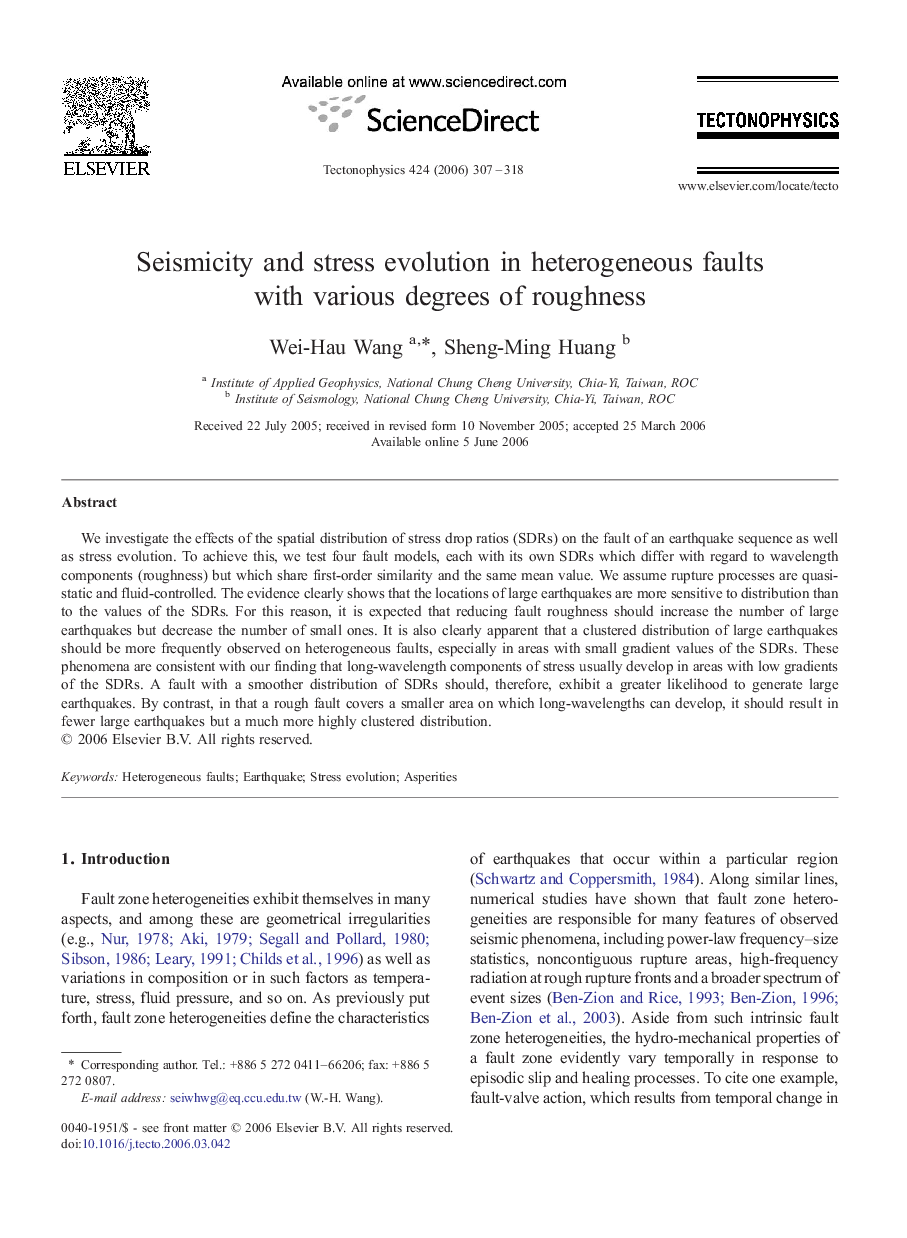| Article ID | Journal | Published Year | Pages | File Type |
|---|---|---|---|---|
| 4694935 | Tectonophysics | 2006 | 12 Pages |
Abstract
We investigate the effects of the spatial distribution of stress drop ratios (SDRs) on the fault of an earthquake sequence as well as stress evolution. To achieve this, we test four fault models, each with its own SDRs which differ with regard to wavelength components (roughness) but which share first-order similarity and the same mean value. We assume rupture processes are quasi-static and fluid-controlled. The evidence clearly shows that the locations of large earthquakes are more sensitive to distribution than to the values of the SDRs. For this reason, it is expected that reducing fault roughness should increase the number of large earthquakes but decrease the number of small ones. It is also clearly apparent that a clustered distribution of large earthquakes should be more frequently observed on heterogeneous faults, especially in areas with small gradient values of the SDRs. These phenomena are consistent with our finding that long-wavelength components of stress usually develop in areas with low gradients of the SDRs. A fault with a smoother distribution of SDRs should, therefore, exhibit a greater likelihood to generate large earthquakes. By contrast, in that a rough fault covers a smaller area on which long-wavelengths can develop, it should result in fewer large earthquakes but a much more highly clustered distribution.
Keywords
Related Topics
Physical Sciences and Engineering
Earth and Planetary Sciences
Earth-Surface Processes
Authors
Wei-Hau Wang, Sheng-Ming Huang,
